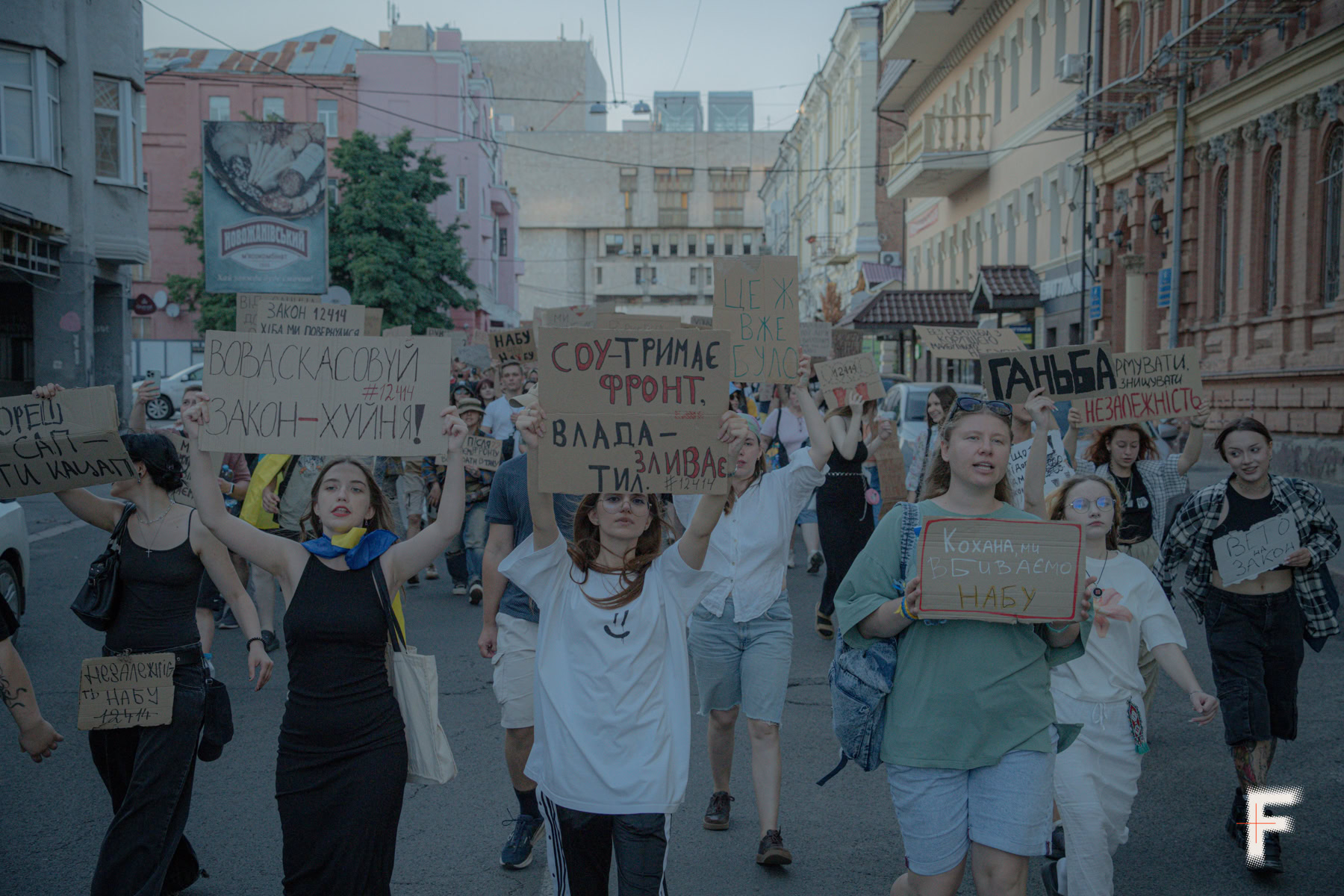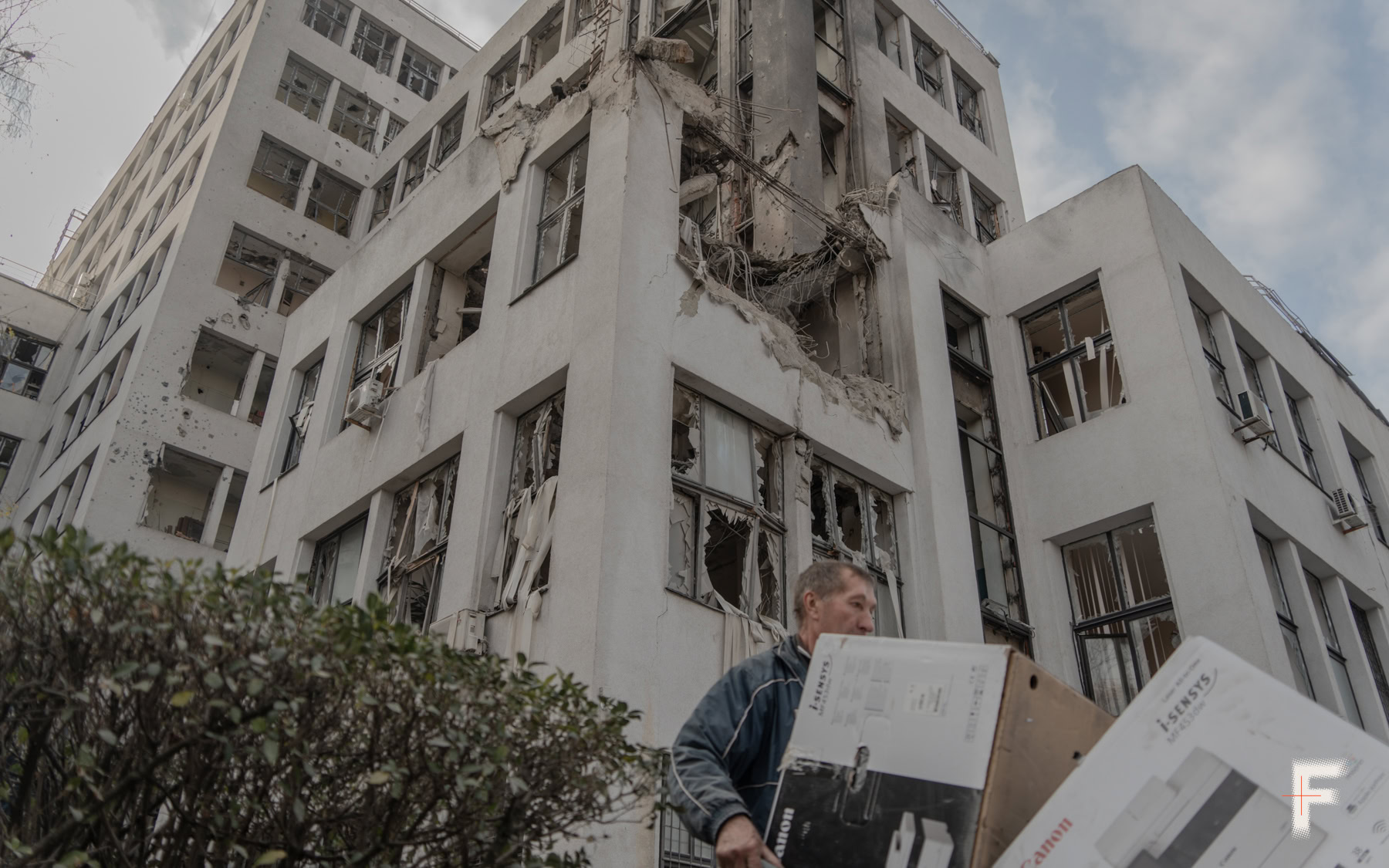

Kharkiv — a city in the east, a city on the edge
Kharkiv is changing its face under the pressure of war: once a city of students and industrial plants, it has become a frontline fortress learning to live under constant shelling. Markets and factories are destroyed, thousands of residents leave, yet a new community emerges and Ukrainian identity grows stronger. Despite the danger, the city keeps working, raising its children, and holding the line – a report by Frontliner journalist Ivan Samoilov.
Almost four years later, Kharkiv has transformed from a city known as a Ukrainian hub of students, science, and industry into a defensive frontier between two civilizations.


Over the course of this struggle and loss, both foreign and Ukrainian students have left the city, and a high number of institutions and businesses have ceased to exist. Missile, artillery, and drone strikes have destroyed the historic center as well as entire residential districts. As hundreds of thousands of Kharkiv residents moved to other cities or abroad, the city has seen a significant rise in a new social group: displaced persons. As new waves of Russian attacks hit Kharkiv and Donetsk regions, former student dormitories are filling up with these newly displaced, hardship-stricken residents. Some eventually move further west, but many remain and work to build a new life here.
The vanishing of old symbols and a changing mindset
Some of Kharkiv’s hallmarks during the time of the late mayor Hennadii Kernes included Europe’s largest market, Barabashovo, Gorky Park, and its benches and trash bins.
In the years of peace, I frequented these iconic Kharkiv spots. In the park, my friends and I rode the attractions and celebrated Halloween and other holidays. While at the sprawling market we shopped and enjoyed Vietnamese cuisine – but now much of the city’s Asian
community has left. After the most recent shelling, the former market giant, born of the so-called “wild” capitalism of the 1990s, now stands in pitiful ruins. The central park lies empty, its rides silent, while across the street, a row of factories is being reduced to rubble by Russian attacks.
Many things have changed, and surprisingly, not all for the worse. Kharkiv continues to assert its Ukrainian identity, with more residents embracing their Ukrainian identity, and the markets will no longer expect shoppers from Belgorod, Russia, for decades to come.
During recent protests against the dismantling of independent anti-corruption bodies, the streets swelled with conscious, proactive young people – a truly inspiring sight that makes you want to stay and carry on living here.


Life under constant threat
In frontline cities, residents have grown accustomed to shelling. In the evenings in the city district of Saltivka, the thunder of artillery from Lyptsi can be heard – the very spot where our defensive line has held since the Russian offensive on the city resumed in May 2024. Meanwhile, in the city center, you can stroll through the lantern-lit Shevchenko Garden, listen to street musicians, and hear the boisterous laughter of young people outside bars. All of this unfolds under the constant presence of Russian drones hovering over every district, their ominous whirring.


The city authorities are trying to do a lot to keep people in Kharkiv, sometimes putting them at risk. A striking example is decorating the streets with plastic ornaments and turning on festive lights. All of this draws large crowds into compact urban spaces – in a city that sits just 25 kilometers from the frontline. Crowds wander through the center against a backdrop of smoke columns, swim in ponds, and sit in restaurants.
A poignant and tragic example was the summer shelling of the Kharkiv Children’s Railway, which killed its director. According to unconfirmed reports, the railway was set to reopen for children, despite being located directly across from an aviation factory.
Resilience and transformation of city life
The city continues to endure periodic, and sometimes constant, shelling. Some grow weary and leave, but the vast majority of those who returned or never left over the past three and a half years remain. They continue to live, take their children to underground schools, and go to work. Over these years, Kharkiv seems to have become somewhat scaled-down – its scale has shrunk. Office centers that were once packed with software companies now wait for even a few tenants, while former industrial sites repeatedly become targets of nighttime attacks.


In 2022, the phrase “Kharkiv – reinforced concrete” was all the rage. Unfortunately, even that label is prone to crumble – just like the Derzhprozm building after evening shelling by KAB bombs. And yet, despite everything, the city lives. Fragilely, painfully, but stubbornly, as if simply existing here has become an act of defiance. Kharkiv is no longer the city it once was, yet perhaps, for the first time, it has found its true self.
Author: Ivan Samoilov
Adapted: Irena Zaburanna
